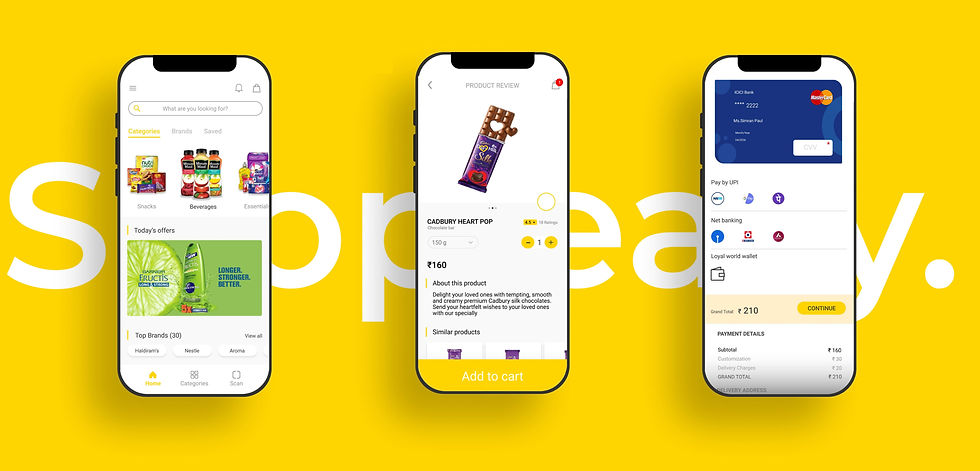
Meet Loyal World Market,
a daily needs superstore that sells over 25,000 products from over 80 countries. It is seeking help from Infosys to improve its sales on campus. Shanmugam, the campus store manager, is in charge of boosting sales to meet company goals and customer satisfaction.
Loyal World store has been experiencing an increase in customer traffic. However, they are not making a lot of sales.
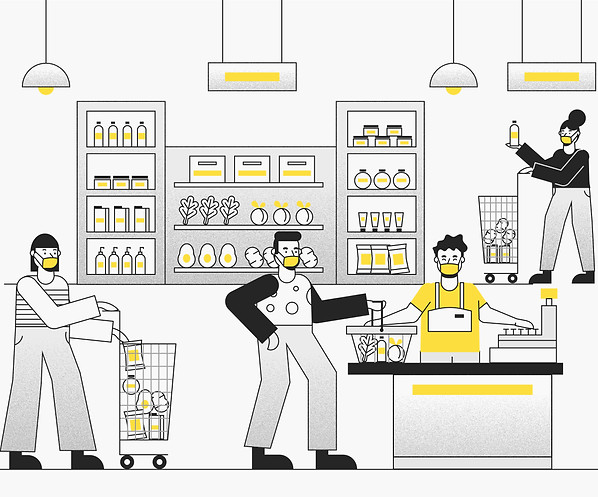
Through this project, We will work with Shanmugham and his team to increase sales and improve customer experience.
Overview
Project
Loyal World Digital is a transformative project tailored explicitly for the Infosys campus in Mysore, India, to enhance the shopping experience of their Incampus store.
Objective
To boost sales for Loyal World and provide customers with an improved shopping experience
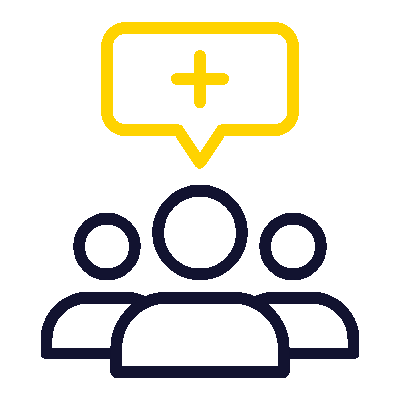
Tools
Figma
Miro
Teams
Team / Duration
Team of 5 /
12 Weeks
UX Processes
Research
User Research
Competitor Analysis
Analysis
Information Architecture
Design
Wireframing
Prototyping
Visual Design
Testing
Usability Testing
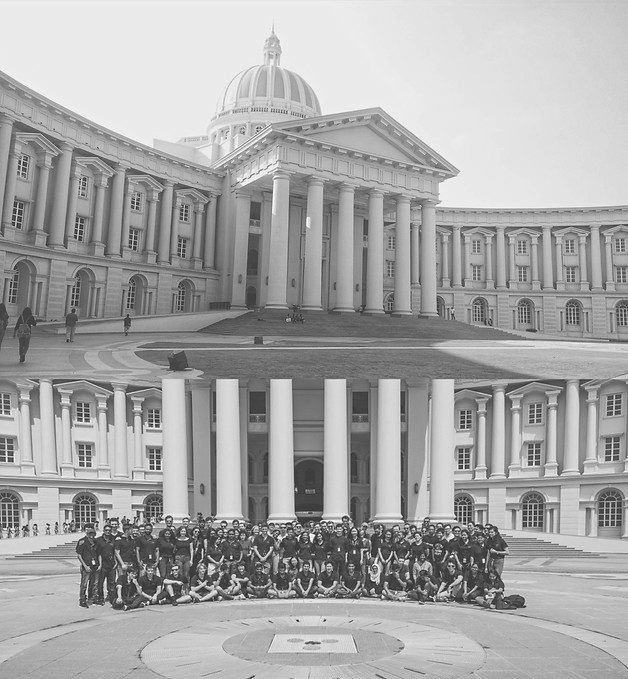
Why did they need a reimagined digital experience?
The Incampus store was designed to meet the unique needs of campus residents, which means that not all products found in a regular store were available.
The Challenge
Infosys Mysore campus is the most prominent training campus in Asia.
12,000
Trainees
2,000 Employees
12
Foodcourts
(capacirty of 2-3K people in one sitting)
3
Loyal World convenience stores
Crowded stores and lengthy queues were the norm, often diminishing the overall experience for the community.
Design Process
Discover
Define
Ideate
Design
Test
.png)
What did we do?
Exploration & Learning
During the initial 3 weeks, we efficiently involved users in the design process by carrying out a range of research activities. In addition to qualitative and quantitative research, we conducted stakeholder interviews and surveys.
We Spoke to:
10 - Infosys Employees
2 - Loyal World staff
168 - Trainees
To Understand:
-
Typical shopping experience
-
Frustrations, pain points, and concerns
-
Motivations
-
Frequency of visits
-
Nature of shopping
-
Decision-making aspects of purchase
-
Obstacles
-
Shoppers' needs
-
Time spent shopping
-
Satisfaction,
-
Demographics
Findings
20mins
Avg time spent at the store.
25%
Visit the store thrice a week
66%
Prefer online shopping
83%
Dissatisfied with current experience
Interview highlights
"I usually make a quick stop to buy groceries after work." - Trainee
"It is always crowded, and sometimes I return without buying anything." Trainee
"I wish they had a delivery service." Trainee
"it's hard to maintain the evening crowd" - LW staff
"We visit in a group after the training session" - Trainee
Did this research help?
NO ❌
The research failed to identify the core issue of reduced sales.
It seemed to lead us towards building just another shopping app.
"To transform the store into a digital experience, we must have a clear and thorough understanding of the physical space."
I led the team to spent the next 7 days observing the store at various times throughout the day to understand:
-
Functioning of the store
-
Store Environment
-
Frustrations in the process
-
Staff & Customer mindset
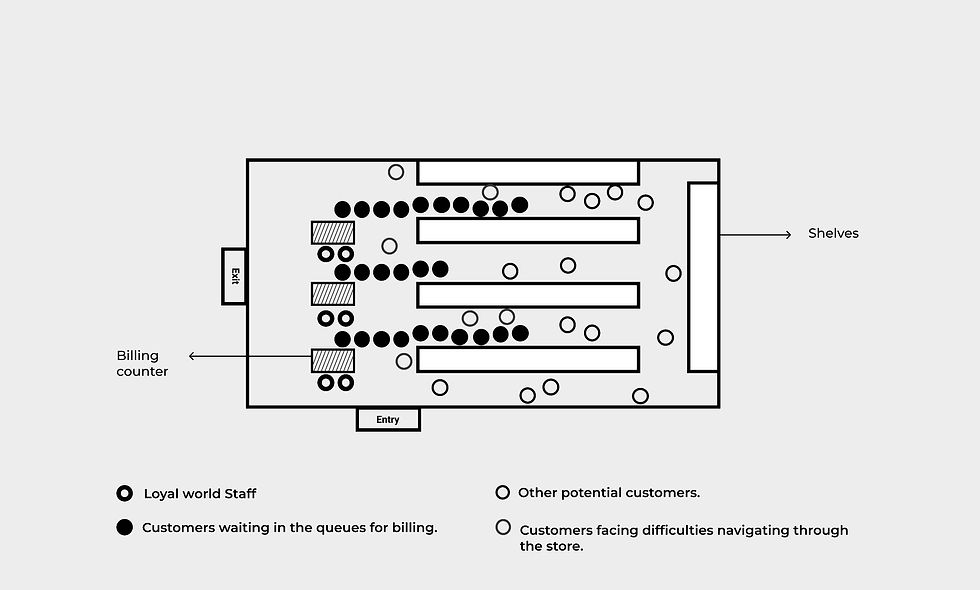_edited.jpg)
Top View of the In-campus store
What was the actual problem?
According to Shanmugham and his team, they had many customers visiting. However, what they did not know was that the surge in customers after their daily training sessions led to:
_edited.png)
Long billing queues
+

More wait time
+

Reduced instore navigation
=

Reduced Sales
Crowded Stores and Long Queues: The current shopping process is in dire need of improvement. The crowded stores and long queues at the Infosys campus are a major inconvenience for trainees, faculty, and staff, causing frustration and wasting valuable time.
Customer Journey
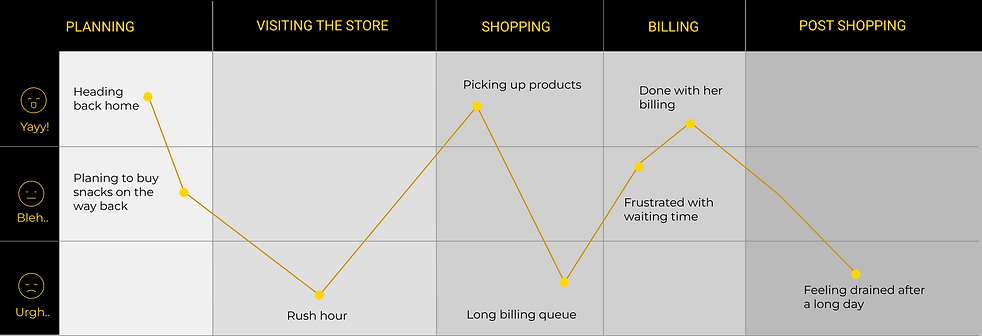.png)
Opportunities
By providing a digital alternative, the project can substantially decrease crowds at the physical store, vastly improving the shopping experience
Implementing self-billing options is essential to expedite the shopping process, significantly reducing the need for manual checkouts.
Prioritizing a hassle-free delivery experience to improve the convenience and satisfaction of customers.
Opportunity
Concerns
Solutions
02
Elements of the shopping experience that can't be replicated digitally. (Sensory experience, Customer Service)
01
Target customers adopting the app.
01 Shopping app
Online shopping alongside traditional physical shopping
03
Alienate customers who prefer or require the physical experience.
02 Self-billing
01
Elderly customers, those with disabilities, or those without access to technology.
Retaining the billing counters and customer service.
02
Technical issues, self-billing system malfunctions.
03
potential security risks like fraud.
04
Educating and training customers.
03 Delivery
01
Fast delivery, flexible delivery options, easy tracking,
02
Would customers be willing to pay more for it?
Limiting the deliveries to 2 or 3 slots in a day.
Incampus trainees can sign up as delivery buddies.
03
Processes to handle delivery? third-party logistics providers?
Survey

33.75%
Physical shopping
50%
Both
16.25%
Online shopping
83%
Not happy with the current experience
66%
Wants an online shopping experience
32%
Would like to be a delivery buddy
How might we make the shopping experience of a customer quick and effortless?
Personas, Use cases & Scenarios
After further analysis, we developed two personas to represent our user groups. We then created use cases and user scenarios that mapped their journey to guide design decisions and ensure that designs met their needs.


Sarah, 23
Incampus trainee







Loyal World Store
Aju, 26
Incampus trainee, Delivery buddy
Features list
And based on the use cases we created a features list:

Barcode scanning for self-billing

Accept or decline delivery requests

Quick, Secure payment

Reward system for completing deliveries

Opportunity for customers to become delivery partners

Track delivery location

Pre-determined delivery location

Utilize reward points for shopping benefits

Work flow
.png)
Iteration & Design
Iterative approach
We tested our initial sketches and prototypes, focusing on usability, familiarity, clarity, simplicity, and consistency. Then, based on feedback from users, stakeholders, and senior leadership, we iteratively refined the designs.

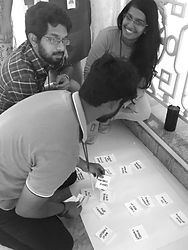
Proposed Design Solution
Streamlined Ordering
Developing a mobile app is a crucial opportunity to streamline the ordering process, making it quicker and more convenient for users.
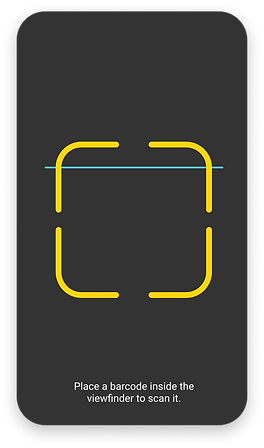
Simply scan the bar codes of your selected items for a Hassle-free Self billing experience.
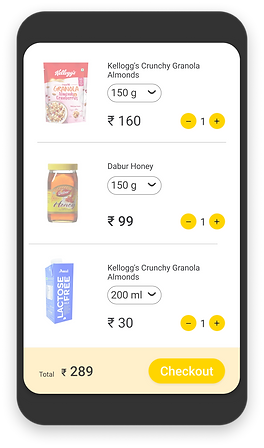
It's quick, easy, and secure! to Checkout and pay for the products on the app.
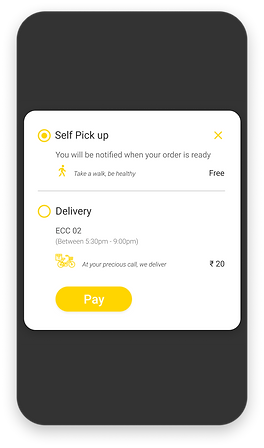
Have the order delivered to you or pick it up yourself.
Efficient Delivery
The project must explore and implement efficient delivery options to ensure prompt and timely delivery of orders to costumers.
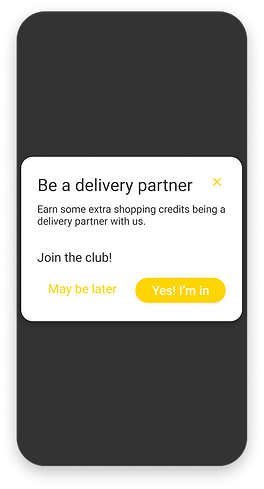
Users can explore becoming a delivery partner on campus.
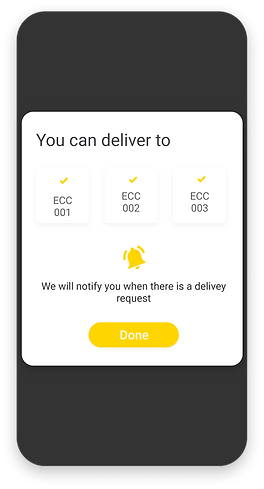
Delivery partners can ensure efficient and fast delivery with Pre-determined delivery locations based on their home location.
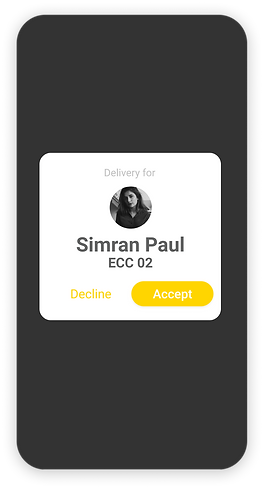
Delivery requests can be Accepted or declined based on delivery partner's convenience.
How can we motivate and keep our delivery partners committed?
Positive reinforcement and engagement
The App must reward users with points for completing deliveries. Pursuing more points acts as positive reinforcement and can keep them engaged.
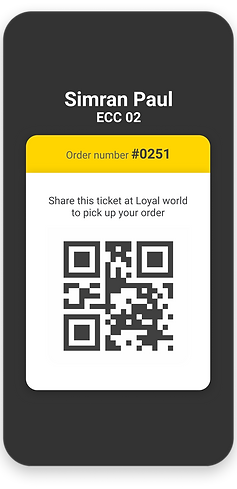
Smooth and efficient pick-up experience by sharing the order information at the store
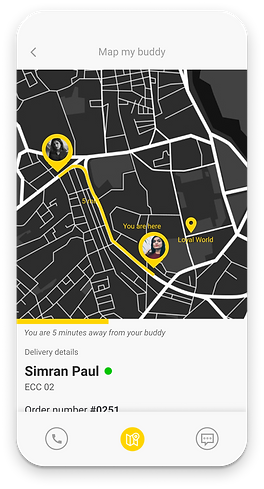
Effortlessly track the order's delivery location with Map My Buddy.
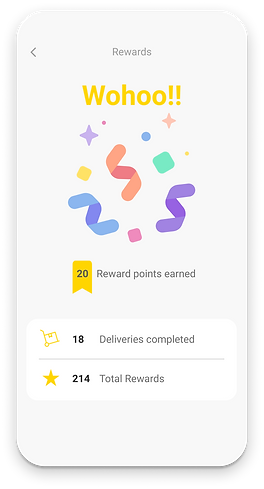
Maximize the shopping experience by utilizing the delivery reward points earned.
Information Architecture
I attempted to craft an information architecture that streamlined the app's content and features.
Result: Ensuring that users could swiftly find what they needed, making the shopping experience effortless.
User-Centered Research
I conducted in-depth user research to understand our target audience's unique needs, motivations, behaviors, and pain points.
Result: This deep dive into user insights was the bedrock upon which we built our design solutions.
My Role & Contributions
As an allround UX designer, my role was pivotal in driving this transformation. Here's how I contributed:
Testing
I conducted testing with lo-fi clickable prototype to understand the viability of the product for different user groups.
Result: refining the prototype to better meet user needs and preferences.
My Impact
The project's results were not just about convenience and improving sales; it was also about transforming a community's daily experience and enhancing their quality of life.
Being a part of the Loyal World Digital project has enriched my journey as a UX designer in several ways. As a designer, I had the opportunity to work on the project with a focus on prioritizing user and business needs and creating a seamless and enjoyable shopping experience. My team and I aimed to identify and eliminate pain points, improve productivity, and drive innovation while ensuring the design aligns with Infosys' needs. The ultimate goal was to enhance user satisfaction and drive business success.


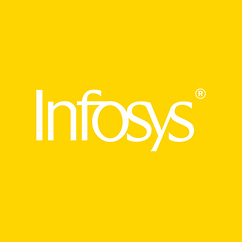
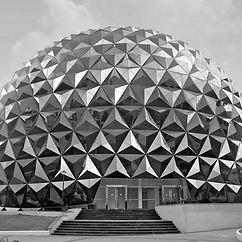
My Learnings
User-Centric Mastery
This project deepened my commitment to user-centered design. It honed my skills in empathizing with users, conducting meaningful research, and crafting design solutions that prioritize their needs.
Mastery of Information Architecture
I acquired a solid grasp of information architecture, enabling me to structure content and features to deliver an intuitive and user-friendly navigation experience.
Visual Design Alignment
The project underscored the significance of aligning visual design with brand identity. It helped me refine my skills in creating visually appealing interfaces that also adhere to brand consistency.
Iterative Expertise
I learned that UX design is an iterative process. Continual feedback and refinement are fundamental to success, and I became adept at evolving designs based on user insights and evolving requirements.
Advanced Problem-Solving
This project presented complex challenges like addressing crowded stores and long queues. I developed a knack for identifying pain points and engineering innovative, user-centered solutions.
Collaboration Proficiency
Working closely with team members, and project managers, taught me the vital role of effective communication and collaboration in achieving design goals.
Project Management Skills
The project encouraged me to refine my project management skills, from setting timelines for deliverables to coordinating tasks within a team, enhancing my overall effectiveness.
Innovation Catalyst
I was inspired to think creatively and drive innovation within the digital space. Exploring novel ideas for self-billing, delivery and demand-based stocking reinforced my commitment to innovative design solutions.
User Empowerment
This experience solidified my belief in technology's power to empower users. By making their daily lives more convenient and efficient, I gained a profound understanding of how our designs can truly resonate with people.
What's next?
-
Task-based testing to help identify areas of improvement.
-
Deep dive to understand feasible delivery practices.